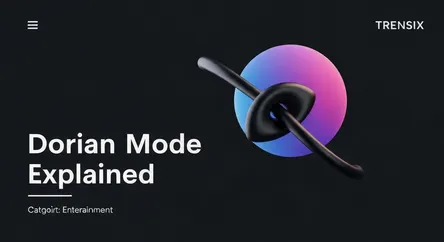Entertainment
Dorian Mode Explained

Discover the Dorian mode. Learn its unique sound, why it's popular in folk, jazz, and rock, and how it creates a melancholic yet hopeful mood.
What is the Dorian Mode?
The Dorian mode is a musical scale and one of the seven main musical modes. Built on the second degree of a major scale, it has a minor quality but with a distinct twist: a raised sixth note. This gives it a brighter, more hopeful sound than the standard natural minor scale. For example, D Dorian (D-E-F-G-A-B-C) is the second mode of the C Major scale. Its unique interval pattern creates a sound that is both familiar and slightly mysterious.
Why is it trending?
The Dorian mode's popularity is timeless because of its versatility. It's a cornerstone in various genres, from traditional Irish and English folk music ("Greensleeves," "Scarborough Fair") to jazz improvisation, famously used by Miles Davis in "So What." It also appears in classic rock and pop, such as in Pink Floyd's "Another Brick in the Wall" and Santana's "Oye Como Va." Musicians and producers continue to use it to add a sophisticated, moody color to their compositions, moving beyond simple major or minor tonalities.
How does it affect people?
The Dorian mode evokes a specific and complex emotional response. It's often described as melancholic, pensive, or thoughtful, but without the deep sadness of a traditional minor key. That raised sixth degree adds a lift, creating a feeling of hopeful contemplation. For listeners, this unique soundscape can make a piece of music feel both ancient and modern, adding an emotional depth and memorable character that sets it apart.